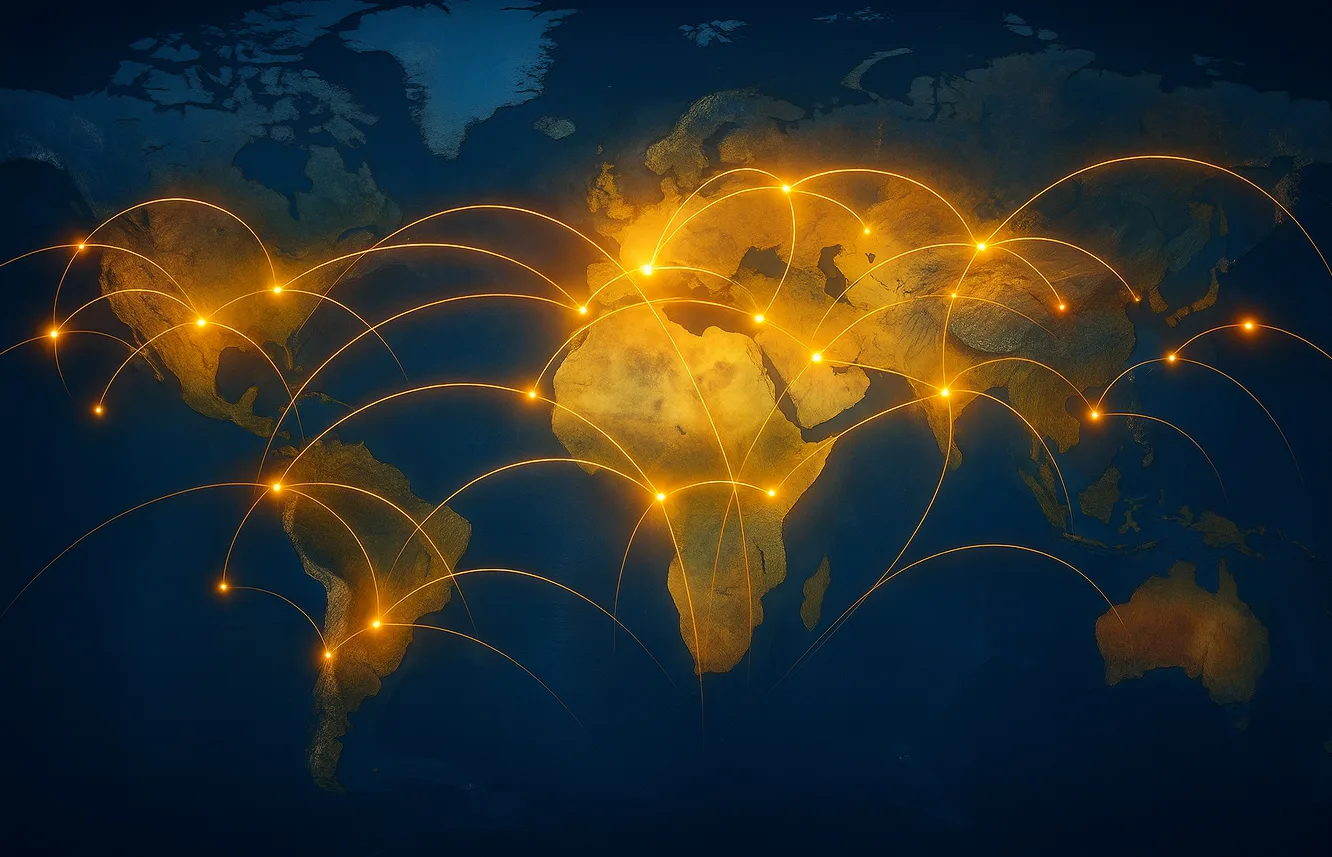The Importance of Supply Chain Management in Global Commerce
The supply chain refers to the entire system of production, processing, and distribution of goods, from raw materials to the final consumer. It encompasses the flow of materials, information, and finances as products move from suppliers to manufacturers to distributors and eventually to retailers, ensuring that goods are available when and where they are needed. In the context of global commerce, the supply chain is crucial because it underpins the efficiency and effectiveness of international trade. A well-optimized supply chain reduces costs, enhances speed, and increases reliability, significantly impacting a company’s competitiveness. With globalization, supply chains have expanded beyond local or national boundaries, making them more complex while simultaneously creating opportunities for cost reduction through economies of scale and access to diverse markets.
The efficiency of supply chain management can directly influence business success, affecting everything from production schedules to customer satisfaction. For instance, companies that effectively manage their supply chains are better positioned to respond to changing market demands and economic conditions, leading to increased resilience and sustainability in operations. Additionally, factors such as technological advancements and shifts in consumer behavior are continuously reshaping supply chains, further highlighting their importance in the modern economy.
In summary, the supply chain is the backbone of global commerce, integral to ensuring efficient operations and the successful delivery of goods to consumers worldwide. [Source: Great Awakening Report]
Components of a Supply Chain
The components of a supply chain include several key elements that work together to ensure the efficient flow of goods and services. Understanding these components and their interconnections is crucial for optimizing operations.
- Suppliers: The foundation of any supply chain, suppliers provide the raw materials and components necessary for production. Their reliability impacts the entire supply chain, making supplier relationships a priority.
- Manufacturers: Once materials are sourced, manufacturers transform these inputs into finished products. This phase includes everything from assembly lines to quality control, where efficiency can significantly affect delivery timelines.
- Warehousing: After production, goods are stored in warehouses. Effective warehousing solutions are critical for inventory management, ensuring that products are available when and where needed. Optimization of warehouse operations can reduce costs and improve response times.
- Distribution: This component involves the transportation of goods from warehouses to retailers or directly to consumers. Distribution strategies, including choosing between direct shipping or utilizing third-party logistics, can impact overall costs and customer satisfaction.
- Retailers: Retailers serve as the connection between consumers and the supply chain. Their ability to predict purchasing trends and stock appropriate inventory levels is vital for meeting customer demand effectively.
- Customers: The supply chain ultimately aims to satisfy customer needs. Understanding customer preferences and feedback allows companies to adjust their supply chain strategies accordingly, improving sales and loyalty.
Each of these components is interconnected; a disruption in one area can ripple throughout the entire supply chain, affecting lead times, costs, and ultimately customer satisfaction. For instance, a delay in supplier shipments can lead to manufacturing slowdowns, which may cause inventory shortages at retail outlets.
Overall, a well-integrated supply chain requires collaboration and communication among all parties involved. Technologies like supply chain management software can facilitate this by providing real-time data, helping stakeholders respond rapidly to changes in demand or supply disruptions. For further insights into the implications of effective supply chain management, consider articles on system efficiencies and case studies showcasing successful supply chain integrations available on our website.
Impact of Supply Chain Failures
A single failure in a supply chain can create ripple effects that lead to widespread disruption across multiple industries. This phenomenon occurs due to the interconnectedness of modern supply chains, where goods, services, and information are dependent on multiple suppliers and logistics processes. For instance, when a supplier encounters issues—such as production delays, natural disasters, or political unrest—it can halt the flow of materials needed for production elsewhere.
This disruption can cause manufacturers to slow down or stop production, leading to shortages of finished goods, delays in delivery to consumers, and ultimately financial losses. A notable example is the COVID-19 pandemic, which highlighted vulnerabilities in global supply chains. As factories closed and transportation networks were restricted, many industries, including automotive and electronics, faced significant delays in production due to a lack of critical components.
Moreover, the just-in-time (JIT) delivery model, while efficient, exacerbates the situation as companies often maintain minimal inventory levels, leaving them ill-equipped to handle unanticipated disruptions. This highlights the importance of resilience in supply chain management, encouraging businesses to diversify their suppliers and adopt more flexible inventory strategies to mitigate the impact of such interruptions [Source: McKinsey & Company].
In conclusion, a single point of failure can trigger a chain reaction that disrupts the entire supply chain network, affecting production, finances, and ultimately the end consumer, emphasizing the need for proactive risk management strategies in supply chain operations. For more insights on managing supply chain challenges, you can explore articles on economic disruptions and global market impacts.
Vulnerabilities in Supply Chains
Supply chains are inherently vulnerable due to various geographic, political, and economic factors that can disrupt their efficiency and effectiveness.
Geographic Vulnerabilities: Natural disasters such as hurricanes, earthquakes, and floods can have catastrophic impacts on supply chains. Geographic diversity in the sourcing of materials can mitigate risks, but concentrating production in specific regions, as seen during disruptions from events like the COVID-19 pandemic, reveals the danger of dependencies. For instance, disruptions in Southeast Asia disproportionately affected global supply chains, especially in technology and automotive sectors, emphasizing the need for geographic diversification and risk assessment in logistics planning [Source: Great Awakening Report].
Political Vulnerabilities: Political instability poses a significant threat to supply chains. Trade wars, sanctions, and changes in governmental policies can disrupt established trade routes and access to critical resources. Political tensions, such as those between the U.S. and China or the ongoing crisis in Ukraine, can lead to unpredictable tariffs and trade restrictions, impacting costs and availability of goods. Businesses need to be agile, adapting to these shifts, and consider localizing some supply chain components to mitigate these risks [Source: Great Awakening Report].
Economic Vulnerabilities: Economic downturns or fluctuations can severely affect supply chains. Events like inflation or recession lead to increased costs for raw materials and labor, which can squeeze profit margins. The global economy’s interconnected nature means that a downturn in one significant market can ripple outwards, affecting suppliers and partners worldwide. Companies must implement financial strategies that include flexible pricing and diversified supplier bases to navigate these challenges effectively [Source: Great Awakening Report].
Understanding these vulnerabilities is crucial for businesses to develop robust supply chains that can withstand various disruptions. Adopting flexible strategies and preparing for potential risks can help mitigate the impact of these vulnerabilities.
Strategies for Strengthening Supply Chains
To enhance the durability of supply chains against disruptions, businesses can adopt several strategic approaches:
- Diversification of Suppliers: Relying on a single supplier can be risky. Companies should diversify their supplier base to mitigate risks associated with supplier-specific disruptions, such as natural disasters or geopolitical tensions. By sourcing materials from multiple suppliers across various regions, businesses can maintain operational continuity even when one part of the supply chain is compromised.
- Local Sourcing: Whenever feasible, companies can consider local sourcing to reduce lead times and transportation costs. Local suppliers may be less susceptible to international disruptions, and shorter supply lines can enhance responsiveness to market fluctuations.
- Inventory Management Strategies: Implementing just-in-time (JIT) inventory systems or keeping buffer stock can help businesses manage disruptions. JIT minimizes inventory holding costs but requires accurate demand forecasting, while buffer stock can provide a safety net during supply chain interruptions.
- Technological Integration: Embracing digital tools like blockchain for transparency, artificial intelligence for predictive analytics, and IoT for real-time tracking can strengthen supply chain visibility and responsiveness. Technology can provide timely data, allowing businesses to identify potential disruptions earlier and respond proactively.
- Collaboration and Partnerships: Forming strategic partnerships with suppliers, logistics providers, and other stakeholders can lead to shared resources and risk mitigation strategies. Furthermore, participation in supply chain networks fosters collaboration and innovation.
- Risk Assessment and Contingency Planning: Regularly conducting risk assessments enables companies to identify vulnerabilities within their supply chains. Developing contingency plans, including alternative routes and suppliers, ensures a swift response to unforeseen events.
- Sustainability Practices: Integrating sustainable practices not only fosters resilience but also improves brand reputation. Sustainable supply chains can adapt more effectively to regulatory changes and consumer preferences, which is vital for long-term viability.
Implementing these strategies requires a holistic view of the supply chain and a commitment to continuous improvement. By prioritizing resilience, businesses can better navigate disruptions and maintain their competitive edge. For further insight into practical applications, consider exploring our detailed reports on supply chain innovations and inventory management techniques.
Role of Emerging Technologies in Supply Chains
Emerging technologies are revolutionizing supply chain management by enhancing efficiency and minimizing risks. Among these innovations, Artificial Intelligence (AI) plays a pivotal role; AI algorithms analyze vast data sets to optimize routing, demand forecasting, and inventory management processes, leading to more streamlined operations. For instance, AI-driven predictive analytics can foresee supply chain disruptions, allowing businesses to implement contingency plans proactively.
Blockchain technology is another game-changer, offering enhanced transparency and accountability. By providing a secure ledger of transactions, blockchain facilitates real-time tracking of goods, reducing fraud and errors. Companies utilizing blockchain can trace products from origin to destination, which not only enhances consumer trust but also ensures compliance with regulations.
Additionally, Internet of Things (IoT) devices are transforming traditional supply chains into interconnected ecosystems. IoT sensors monitor the condition of products during transportation, enabling companies to adjust conditions in real-time and reduce spoilage or damage risks, particularly in sectors like pharmaceuticals and food.
Robotic Process Automation (RPA) improves operational efficiency by automating routine tasks. This technology minimizes human error and accelerates processes, leading to significant cost savings.
Finally, 3D printing enables on-demand production, thereby reducing lead times and inventory costs. It empowers companies to respond swiftly to market demands and customize products according to consumer preferences.
To discover more on how various technologies are shaping the future of supply chains, explore our article on technology trends in risk management and the impact of AI on corporate strategies.
Conclusion: The Future of Supply Chains
A comprehensive understanding of the insights shared reveals that proactive measures are essential for ensuring a robust and resilient future. By prioritizing early and strategic actions, individuals and organizations can significantly mitigate risks in various aspects, from health crises to environmental changes and economic instability. This foresight enables the implementation of effective strategies, encourages adaptive behaviors, and fosters a culture of preparedness.
For instance, the ongoing narrative surrounding the global pandemic highlights the importance of anticipating potential health crises and reinforcing public health infrastructures. As noted in various reports, such as the Weekly Briefing on the Coronavirus Pandemic, understanding and addressing vulnerabilities can lead to more effective interventions and recovery plans.
Moreover, proactive community engagement, as discussed in the Weekly Report on State Responses to Vaccination Issues, showcases the necessity of collaboration and open communication among stakeholders. These interactions can enhance trust and promote collective efforts toward shared goals.
In summary, embracing proactive strategies is crucial not only for immediate challenges but also for building resilience against future uncertainties. Taking informed actions today can reshape tomorrow’s landscape, creating a more secure and sustainable environment for all.
Sources
1. Great Awakening Report
2. McKinsey & Company
3. Harvard Business Review
4. BBC
5. Great Awakening Report
6. Great Awakening Report
7. Great Awakening Report
8. Great Awakening Report
9. Great Awakening Report
10. Great Awakening Report
11. Great Awakening Report
12. Great Awakening Report
13. Great Awakening Report
14. Great Awakening Report
Share This Report
Have questions?
At Great Awakening Report, we are dedicated to supporting your journey toward truth and enlightenment through our specialized Coaching and Consulting services.
Coaching Services: Our coaching programs are designed to guide you through personal awakening and transformation. We offer personalized sessions that focus on expanding consciousness, uncovering hidden truths, and fostering spiritual growth. Our experienced coaches provide the tools and insights necessary to navigate your path with clarity and confidence.
Consulting Services: For organizations and individuals seeking deeper understanding and strategic guidance, our consulting services offer expert analysis and solutions. We delve into areas such as global transitions, alternative news insights, and consciousness studies to provide comprehensive strategies tailored to your unique objectives.
Embark on a transformative journey with our Coaching and Consulting services, and unlock your highest potential. To learn more and schedule a session, visit our Coaching and Consulting pages.
Thank you
Thank you to our subscribers and readers for your continued support and dedication to truth and awakening. Your encouragement, engagement, and belief in our mission make everything we do possible. Together, we are expanding awareness and helping illuminate the path forward.
If you would like to further support the Great Awakening team and our ongoing efforts to share insight, knowledge, and truth, you can DONATE HERE.
With deep gratitude,
– Great Awakening Team
DISCLAIMER: All statements, claims, views and opinions that appear anywhere on this site, whether stated as theories or absolute facts, are always presented by The Great Awakening Report (GAR) as unverified—and should be personally fact checked and discerned by you, the reader.Any opinions or statements herein presented are not necessarily promoted, endorsed, or agreed to by GAR, those who work with GAR, or those who read or subscribe to GAR.Any belief or conclusion gleaned from content on this site is solely the responsibility of you the reader to substantiate.Any actions taken by those who read material on this site are solely the responsibility of the acting party.You are encouraged to think for yourself and do your own research.Nothing on this site is meant to be believed without question or personal appraisal.
COPYRIGHT DISCLAIMER: Citation of articles and authors in this report does not imply ownership. Works and images presented here fall under Fair Use Section 107 and are used for commentary on globally significant newsworthy events. Under Section 107 of the Copyright Act 1976, allowance is made for fair use for purposes such as criticism, comment, news reporting, teaching, scholarship, and research.
COMMUNITY GUIDELINES DISCLAIMER: The points of view and purpose of this video is not to bully or harass anybody, but rather share that opinion and thoughts with other like-minded individuals curious about the subject.










